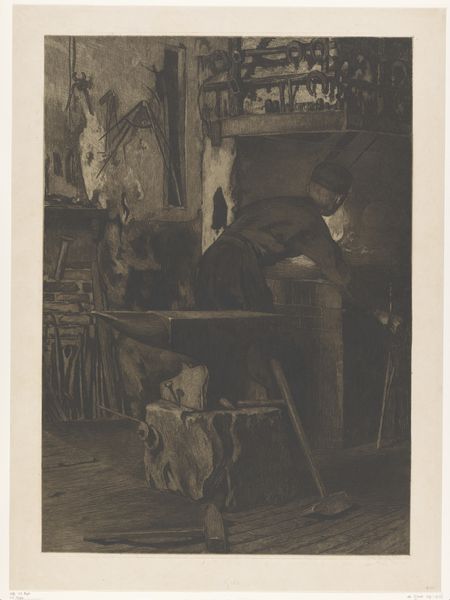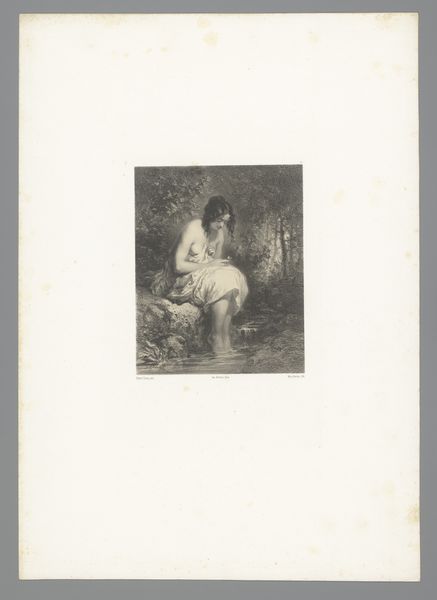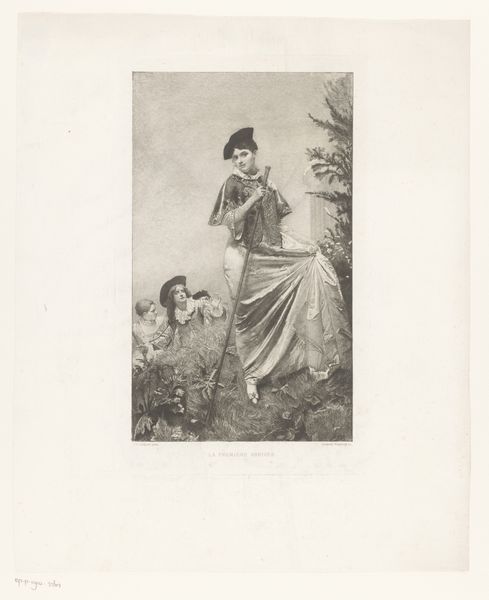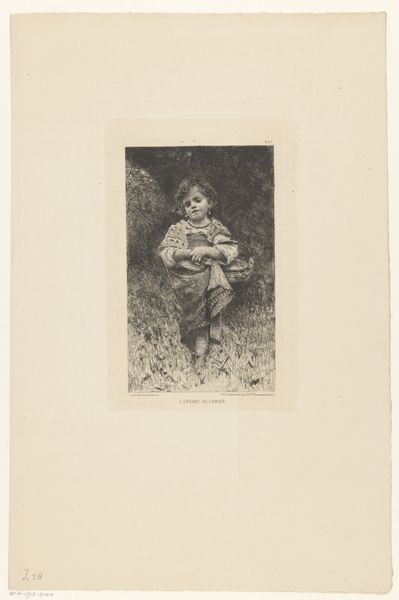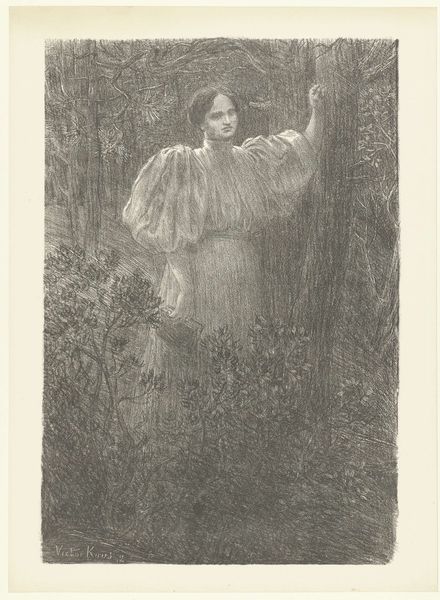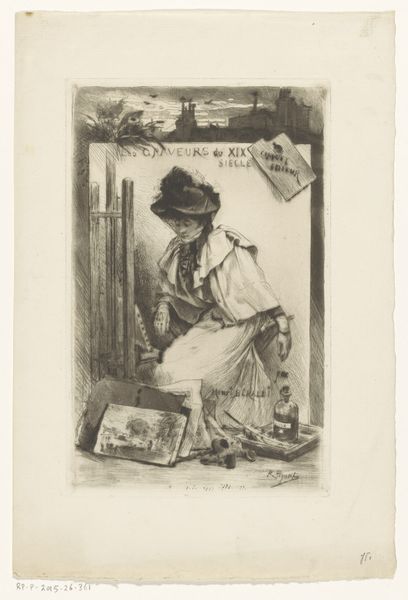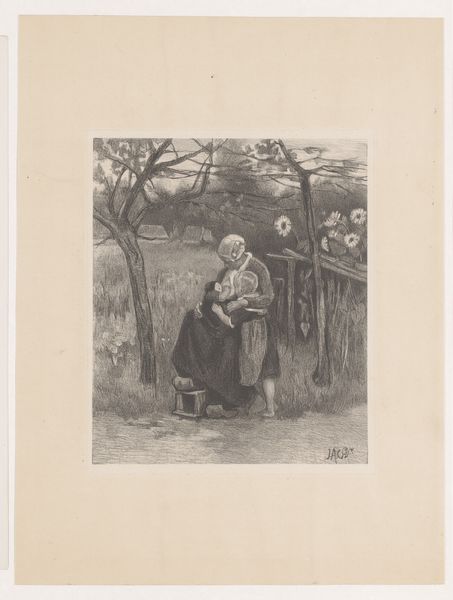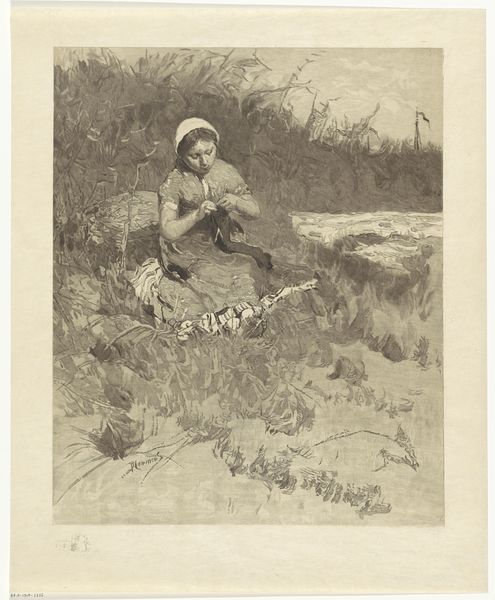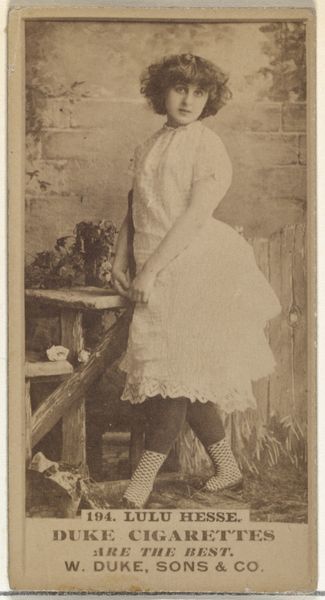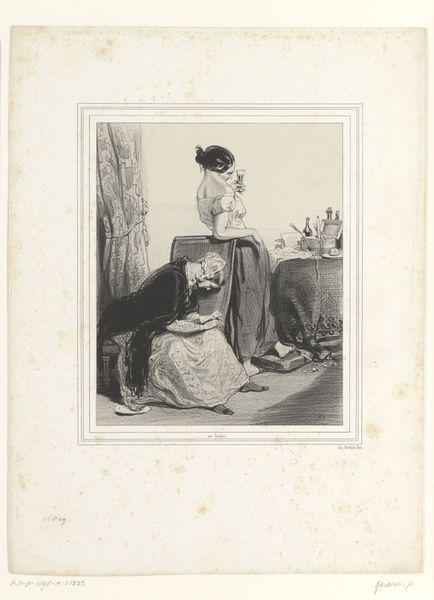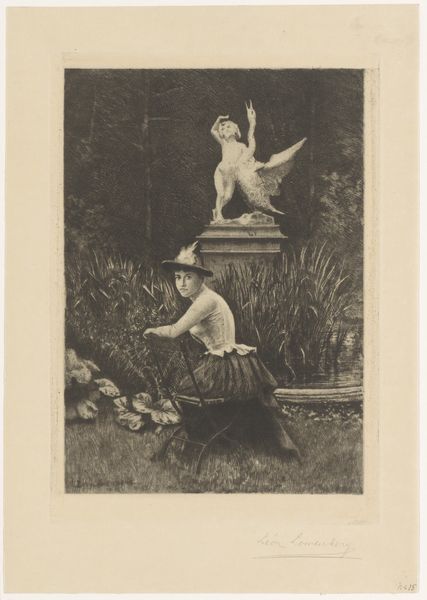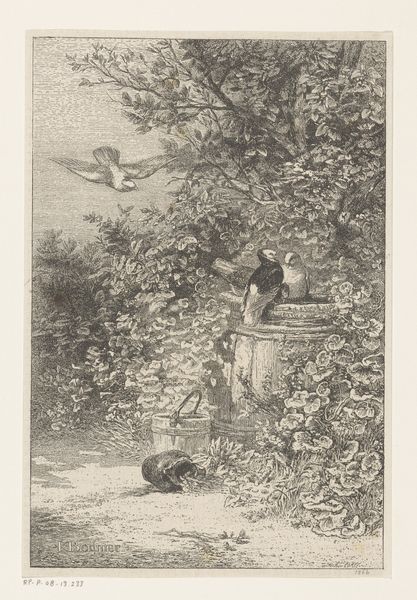
drawing, print, paper, ink
#
portrait
#
drawing
# print
#
landscape
#
paper
#
ink
#
genre-painting
Dimensions: height 269 mm, width 163 mm
Copyright: Rijks Museum: Open Domain
Editor: Here we have a print called "Kippetjes voeren," which I believe translates to "Feeding Chickens," dating from 1903 to 1920, created by Stoomsteendrukkerij Senefelder. It seems to be ink on paper, a lithograph maybe. It has a tranquil feel, very pastoral. What do you see in this piece, especially considering its materials? Curator: I’m immediately drawn to the industrial context in which this idyllic scene was produced. Stoomsteendrukkerij Senefelder was a commercial printing house. This work sits interestingly between high art and the means of mass production. The very act of reproducing a "genre scene" like this one transforms it. Consider the labor involved: from the initial drawing, to the lithographic process, the labour in the factory, and finally distribution. Editor: So, you’re saying that the scene of a girl feeding chickens, which appears quite simple, becomes complex when you consider the labour required to produce and distribute the image? Curator: Precisely. Look at the paper, the ink. These aren't neutral materials; they were commodities, produced through specific social and economic structures. It challenges the romantic notion of the artist as a lone genius. The question becomes, what was the intended market, the point of this image’s circulation? What needs, what consumer desires were being met by a printing house willing to deploy the machinery and skills for its production? This is where art history merges with social history. Editor: That's a fascinating way to look at it, shifting the focus from the artistic expression to the means of production and the targeted audience. It completely changes my perception. Curator: Indeed. It reveals the often invisible networks of labor, materials, and consumption that underpin our experience of art. Editor: Thanks for sharing these thoughts, I have really expanded my understanding of printmaking’s material impact. Curator: And it's a reminder that even seemingly simple images are products of complex social and economic systems.
Comments
No comments
Be the first to comment and join the conversation on the ultimate creative platform.
